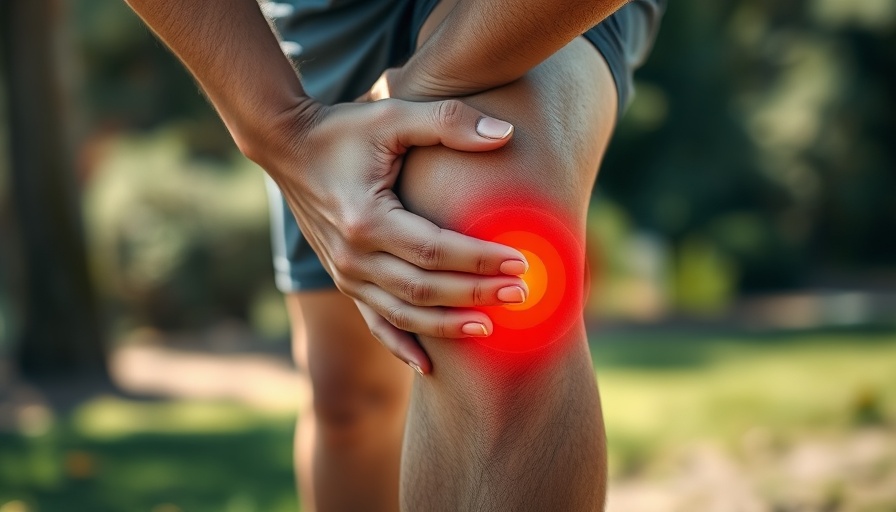
The Rise of Knee Pain: Understanding What Affects Millions
Knee pain has become a common complaint affecting millions worldwide, often sidelined by the daily grind of life. Various factors contribute, including obesity, lack of flexibility in muscles, injuries, or age-related wear and tear. In recent years, traditional treatments have evolved, with a segment of the population turning to the effectiveness of home remedies. With implications for overall health and well-being, understanding which remedies work best can offer significant relief.
RICE: The First Step for Injury Relief
When dealing with minor injuries such as strains or sprains, the "RICE" protocol is a fundamental approach to initial treatment. RICE stands for Rest, Ice, Compression, and Elevation. It serves as a first line of defense against debilitating knee pain. Rest allows for injury healing; icing can mitigate swelling, compression helps manage inflammation, and elevation promotes blood flow back to the heart.
The Healing Power of Tai Chi
Tai chi, an ancient mind-body exercise originating from China, has gained notoriety as a beneficial practice for those suffering from osteoarthritis in particular. Its gentle movements improve balance and flexibility while promoting relaxation. Studies indicate that tai chi can effectively reduce knee pain and increase mobility. For those struggling to maintain physical activity due to knee issues, tai chi presents a low-impact method to participate in exercise without exacerbating conditions.
Embrace the Warmth: Heat and Cold Therapy
Applying heat or cold therapy has been proven effective in managing knee pain. Cold therapy reduces inflammation and numbs sharp pain, while heat improves circulation and alleviates stiffness. This dual approach allows for targeting pain based on its nature and intensity, providing a tailored relief strategy. Alternating between the two can maximize results and lead to quicker recovery from discomfort.
Herbal Remedies: Nature's Answer to Pain
Ginger and turmeric have emerged as nutritional powerhouses that can significantly aid in relieving knee discomfort. Ginger’s potent anti-inflammatory properties make it a go-to option, particularly for those with arthritis. Similarly, turmeric, with its active compound curcumin, helps modulate inflammatory responses within the body. Creating herbal pastes with these natural ingredients or using them in daily meals can provide ongoing relief without the side effects associated with some pharmaceuticals.
The Importance of Weight Management
Overweight individuals often experience compounded pressure on their knee joints, which can intensify pain. Reducing excess weight can alleviate this burden, contributing to improved mobility and overall joint health. A holistic approach considering both dieting and exercise should be implemented to witness tangible change in knee pain levels. Consultation with healthcare professionals can help create comprehensive, individualized plans, targeting realistic weight goals.
Beyond Home Remedies: When to Seek Professional Help
While managing knee pain at home may be effective for many individuals, it's critical to recognize the moments when professional intervention is necessary. Persistent or severe pain, swelling, or changes in knee appearance should prompt a visit to a healthcare provider for more direct assessment and intervention. Early diagnosis and treatment can lead to better outcomes and prevent the need for more invasive solutions down the line.
Conclusion: Empowering Your Journey to Pain-Free Living
Managing knee pain without the reliance on pharmaceuticals or costly treatments is more attainable than many realize. By adopting home remedies such as RICE, engaging in gentle exercise like tai chi, utilizing heat and cold therapy, and considering herbal supplementation, individuals can reclaim their mobility and quality of life. Furthermore, proactive weight management can enhance these benefits. Armed with knowledge and practical strategies, embarking on your personal journey towards a pain-free life is entirely within reach.
 Add Row
Add Row  Add
Add 




Write A Comment